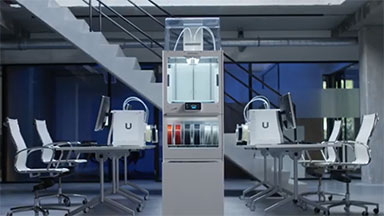NVIDIA CUDA Toolkit 2.2 Released
Latest toolkit supports new features to enhance CUDA GPU.
Latest toolkit supports new features to enhance CUDA GPU.
Latest News
Mercedes-Benz Funds Educational Initiatives in AI, Automated Driving at Universities
ESI Group Collaborates with Aberdeen Strategy on Virtual Prototyping
Hewlett Packard Enterprise Launches Speed-Driven Supercomputer in Poland
Energica Renews Collaboration With Siemens
Maximize Workforce Efficiency: Using KnowledgeSmart to Identify Skill Gaps
IronCAD 2024 Product Update 1 Released
All posts
May 11, 2009
By DE Editors
NVIDIA has released version 2.2 of the CUDA Toolkit and SDK for GPU Computing. This latest release supports several new features to get the most performance out of NVIDIA’s massively parallel CUDA-enabled GPUs. In addition, version 2.2 of the CUDA Toolkit includes support for Windows 7, the upcoming OS from Microsoft that embraces GPU Computing.
Additional new features in CUDA Toolkit 2.2 include:
- Visual Profiler for the GPU. The most common step in tuning application performance is profiling the application and then modifying the code, according to NVIDIA. The CUDA Visual Profiler is a graphical tool that enables the profiling of C applications running on the GPU. This latest release of the CUDA Visual Profiler includes metrics for memory transactions, giving developers visibility into one of the most important areas they can tune to get better performance.
- Improved OpenGL Interop. Delivers improved performance for Medical Imaging and other OpenGL applications running on Quadro GPUs when computing with CUDA and rendering OpenGL graphics functions are performed on different GPUs.
- Texture from Pitch Linear Memory. Delivers up to 2x bandwidth savings for video processing applications, according to the company.
- Zero-copy. Enables streaming media, video transcoding, image processing, and signal processing applications to realize performance improvements by allowing CUDA functions to read and write directly from pinned system memory. This reduces the frequency and amount of data copied back and forth between GPU and CPU memory. Supported on MCP7x and GT200 and later GPUs.
- Pinned Shared Sysmem. Enables applications that use multiple GPUs to achieve better performance and use less total system memory by allowing multiple GPUs to access the same data in system memory. Typical multi-GPU systems include Tesla servers, Tesla Personal Supercomputers, workstations using QuadroPlex deskside units and consumer systems with multiple GPUs.
- Asynchronous memcopy on Vista. Allows applications to realize performance improvements by copying memory asynchronously. This feature was already available on other supported platforms but is now available on Vista.
- Hardware Debugger for the GPU. Developers can now use a hardware-level debugger on CUDA-enabled GPUs that offers the simplicity of the popular open-source GDB debugger yet enables a developer to easily debug a program that is running thousands of threads on the GPU. This CUDA GDB debugger for Linux has all the features required to debug directly on the GPU, including the ability to set breakpoints, watch variables, inspect state, etc.
- Exclusive Device Mode. This system configuration option allows an application to get exclusive use of a GPU, guaranteeing that all of the processing power and memory of the GPU will be dedicated to that application. Multiple applications can still be run concurrently on the system, but only one application can make use of each GPU at a time. This configuration is particularly useful on Tesla cluster systems where large applications may require dedicated use of one or more GPUs on each node of a Linux cluster.
For more information, visit NVIDIA.
Sources: Press materials received from the company and additional information gleaned from the company’s website.
Subscribe to our FREE magazine, FREE email newsletters or both!
Join over 90,000 engineering professionals who get fresh engineering news as soon as it is published.
Latest News
Mercedes-Benz Funds Educational Initiatives in AI, Automated Driving at Universities
ESI Group Collaborates with Aberdeen Strategy on Virtual Prototyping
Hewlett Packard Enterprise Launches Speed-Driven Supercomputer in Poland
Energica Renews Collaboration With Siemens
Maximize Workforce Efficiency: Using KnowledgeSmart to Identify Skill Gaps
IronCAD 2024 Product Update 1 Released
All posts
About the Author
DE’s editors contribute news and new product announcements to Digital Engineering.
Press releases may be sent to them via [email protected].
#6577
New & Noteworthy

New & Noteworthy: Safe, Cost-Effective Metal 3D Printing - Anywhere
Desktop Metal’s Studio System offers turnkey metal printing for prototypes and...

New & Noteworthy: Direct Neutronics Analysis on CAD
Coreform Cubit 2023.11 workflows enable neutronics directly on CAD for next-generation nuclear energy...

New & Noteworthy: Agile Engineering Collaboration
Authentise Threads is a new software tool for distributed communications and project...

New & Noteworthy Product Introduction: Enterprise VR Headset
Lenovo ThinkReality VRX has an immersive display works with virtual, augmented and...

